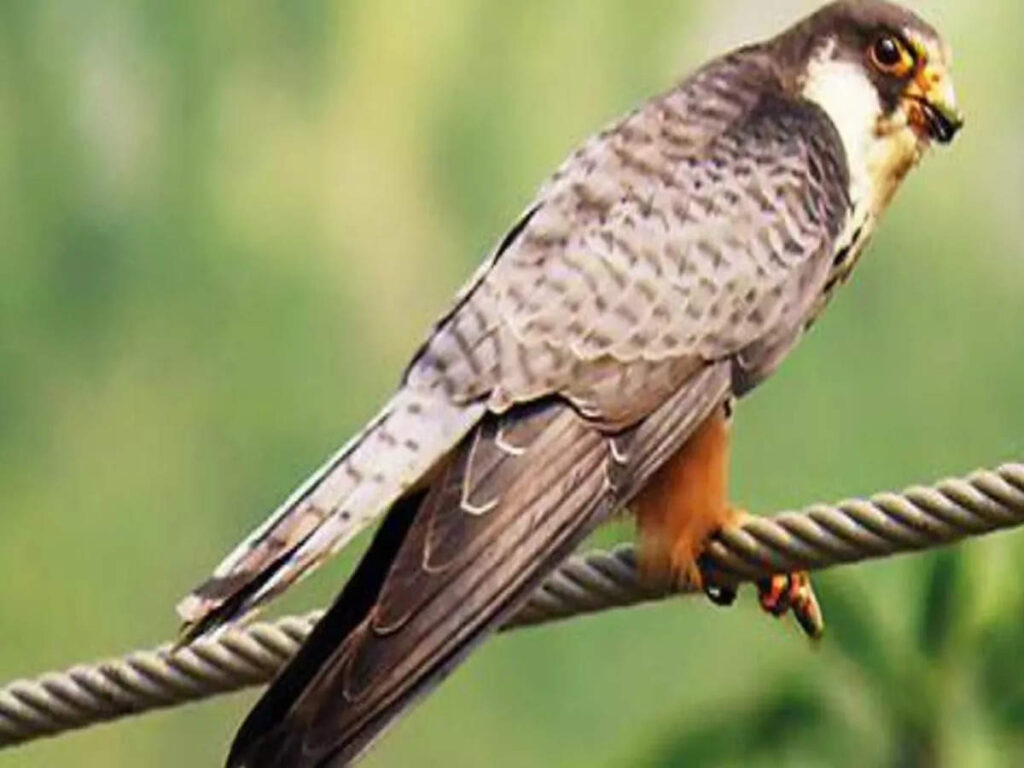In Palghar, 35 Amur Falcon Birds come to a Halt!!
A flock of 35 Amur falcons, a champion migratory bird known as the world’s longest-traveling raptor, basked in the warmer climates of the Gogte saltpans between Nala Sopara and Vasai, a treat for the birdwatching community of Vasai-Virar.
The location serves as a rest stop for the avian beauties as they prepare to continue their journey to South Africa and other warmer climates.
Pravin Babe, a Palghar-based birder, captured the winged beauties in all their splendor, generating a lot of interest among other birdwatchers in the vicinity. Amol Lopes, one of them, explained that the iconic bird makes long migratory treks from colder locations such as Siberia, Russia, and China to warmer areas like South Africa, India, and eastern nations. The Amur falcon can fly 22,000 kilometers per year.

“The migrating Amur falcon also flies at night, crossing huge oceans to fatten up in Nagaland and Bangladesh before staging for overland flights through Peninsular India,” Amol Lopes explained.
They then fly nonstop over 3,000 kilometers across the Indian Ocean to East Africa, flying at all hours of the day and night. This falcon is classified as an “elliptical migratory” since it travels mostly overland to the northwest on its way home.
The avian beauty is found in abundance in Pangti, Wokha district, Nagaland, and feeds on grasshoppers, dragonflies, and insects. It is protected under the Indian Wildlife Protection Act, 1972. For at least a few weeks, this is their favorite rest stop.
“We built the Vasai Birds app, and we have documented more than 310 bird species in the Vasai-Virar belt since 2012,” Lopes added, “and birdwatchers post any new sightings on the app for fresh updates.”
The Gogte Salt Pans are made up of shallow-water salt pans and two major lakes: Chulne Lake and Gass Lake. However, in five years, the salt pans will vanish due to the construction of concrete jungles, putting the birds’ habitat in jeopardy. This should concern bird watchers because the salt pans provide food and shelter to many migratory and resident species of birds.
Adesh Shivkar, the founder member of the Mumbai Bird Watchers’ Club and a bird expert, stated that “The name of the Amur falcon stems from the territories of North Mongolia and East Siberia, which are also known as Amurland.” Poachers killed an average of 20,000 birds each day for their meat during their migration in Nagaland, which has since stopped. “
Poachers in Nagaland would poison their prey—fish—to trap the Amur falcon during the stopover period, but after environmentalists protested to the Nagaland government, the poaching stopped, and the same poachers are now working as bird guides and spreading awareness about the need to protect and conserve the falcons.
The birds fatten up in Goa, Mumbai, Gujarat, Kerala, and the western coasts before flying to South Africa and returning by a different path, according to Shivkar, who added, “We need to maintain the birds’ passageways such as the Gogte saltpans as it is an essential ecosystem and habitat.”






